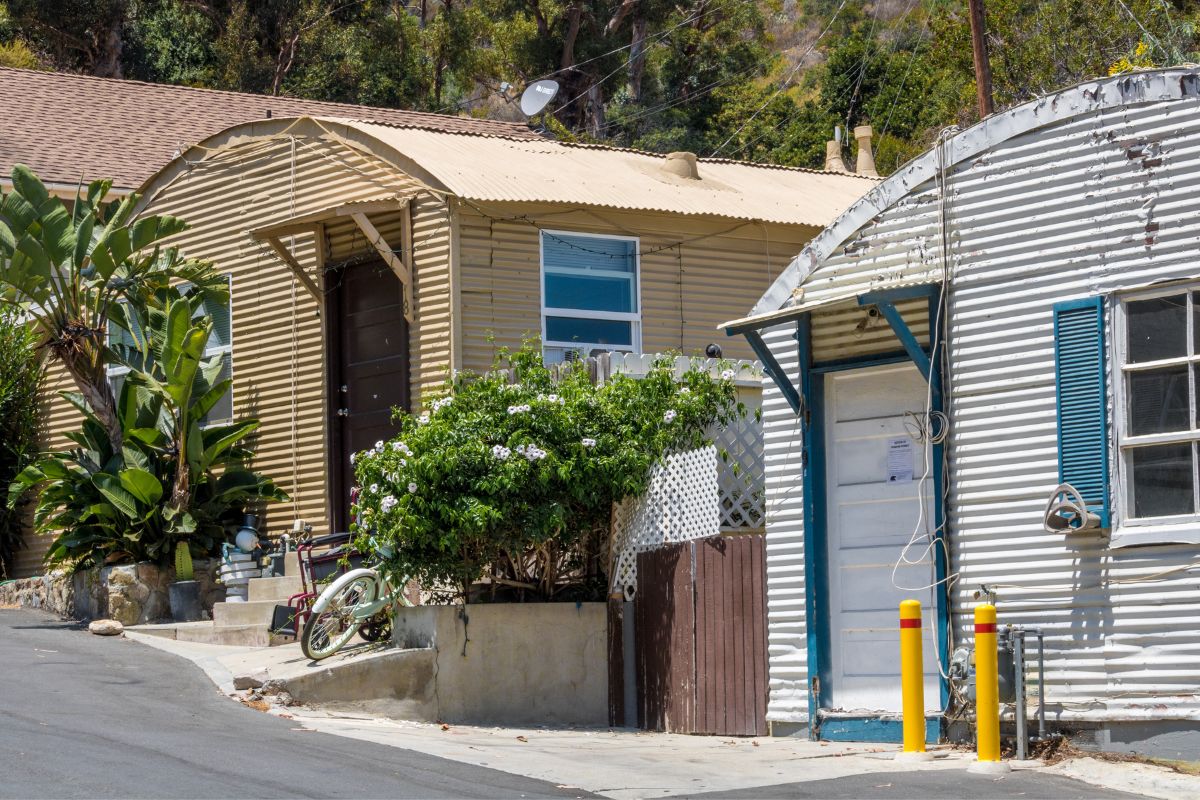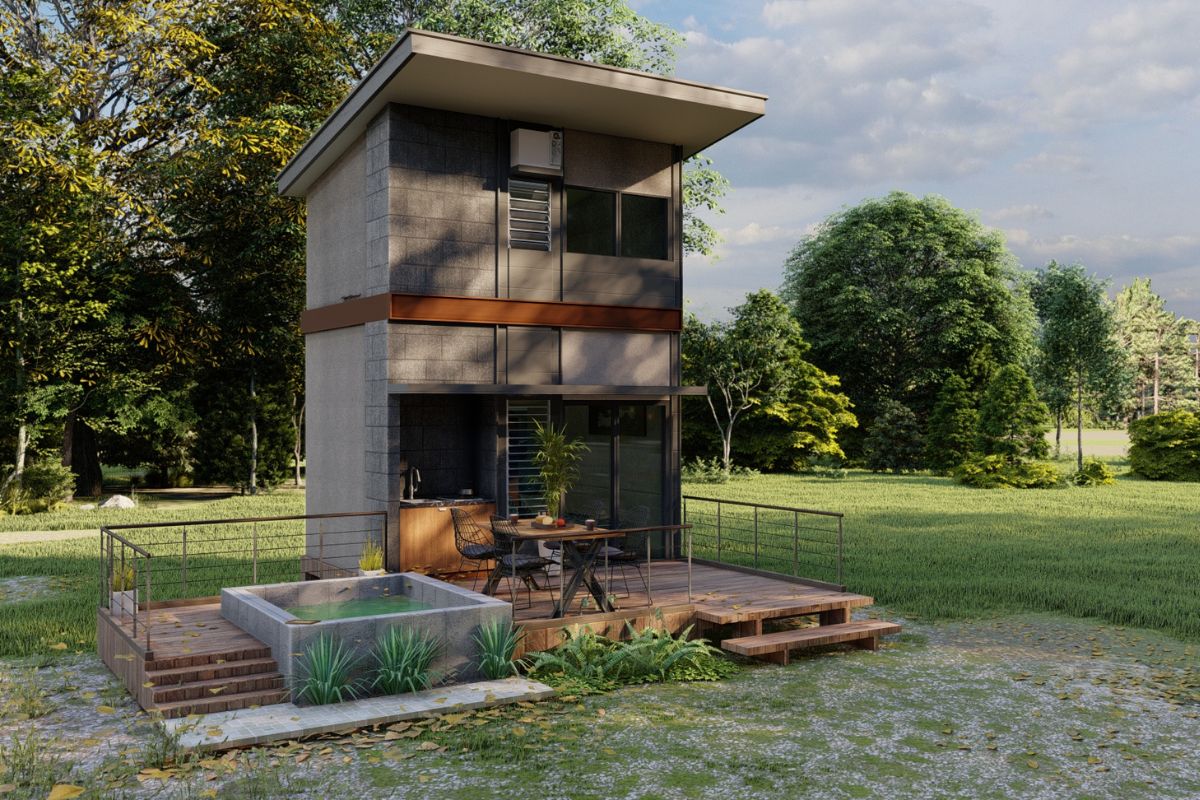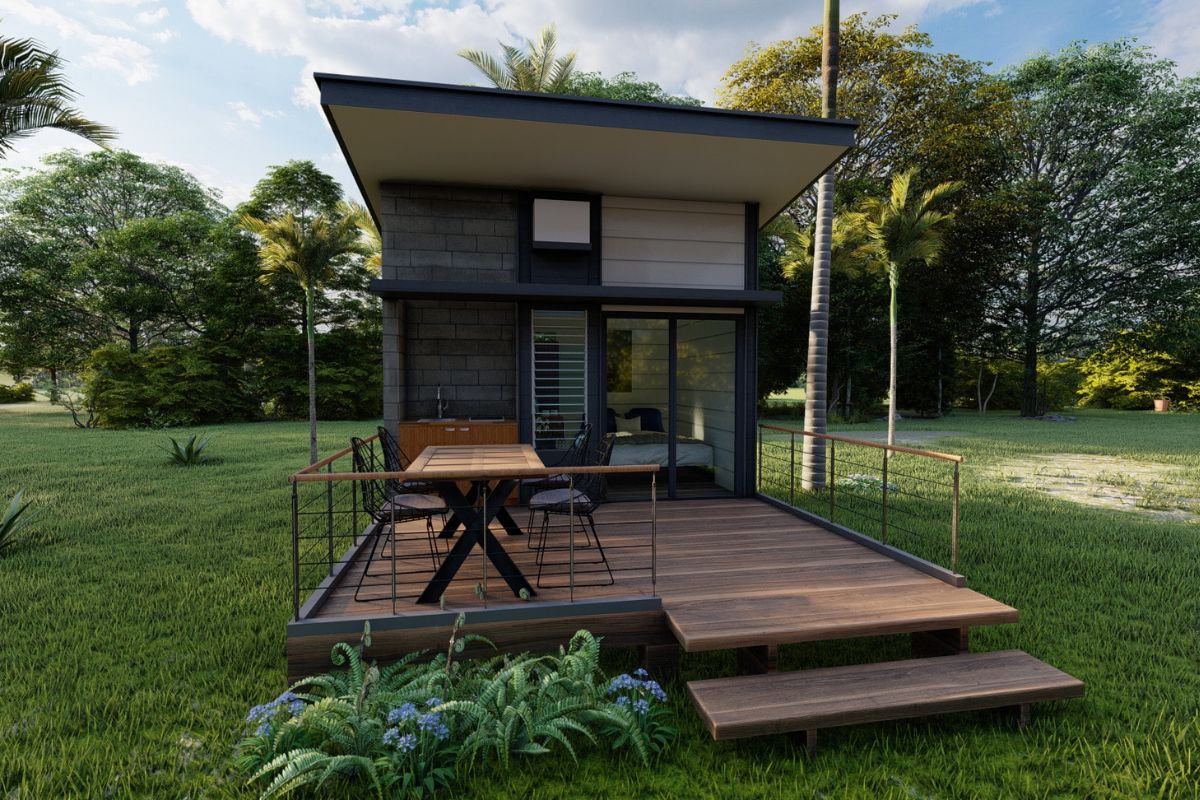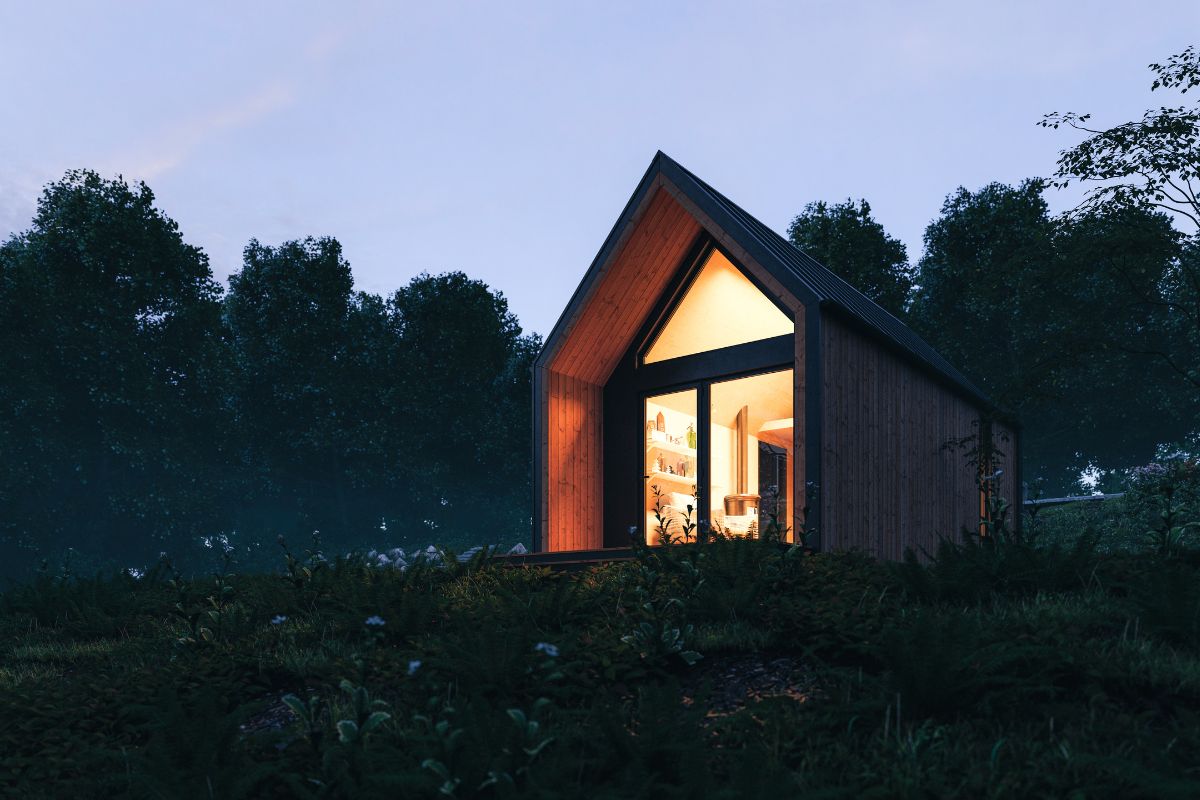Whether you’re currently looking to change your housing situation or you’re a homeowner interested in learning more about the incredibly in-depth history of the Tiny House Movement – you’ve come to the right place.

If you’re already familiar with the housing industry, you might already be well familiar with the Tiny House Movement. Over the past 10 years, in fact, tiny homes have been on the rise in popularity and demand.
But, despite all this forward momentum for tiny homes, what is the history of the Tiny House Movement, exactly? This is what we are here to tell you all about in this post.
Below, you’ll find a deep dive look into the history of the Tiny House Movement. When you’re ready, just keep on reading to discover the extensive timeline.
What Is The Tiny House Movement?
Before we get any further into this guide, we first think that it would be a good idea to provide you with a breakdown of what the Tiny House Movement is, as this will help you to better understand the rich history behind this interesting movement.
To cut a long story short, the Tiny House Movement is essentially both a social and architectural movement that is primarily focused on, you guessed it, tiny houses!
While it might seem strange that there would be a movement surrounding small houses, it’s important to note that the values and mission behind this movement run much deeper.
The Tiny House Movement pushes the idea that quality over quantity is far more important than quantity of quality.
Instead of having large homes and lots of materialistic items, the Tiny House Movement bases its fundamental values on simplicity, minimalistic living and community, and experiences over wealth and materialistic possessions.
Along with this, the Tiny House Movement also believes that a flashier, more abundant lifestyle can often lead to an increased sense of responsibility and stress.
Instead of having to deal with these types of situational stresses, the Tiny House Movement pushes for people to opt for minimalism and simplicity.
Despite this fundamental belief, it is worth noting that there are plenty of different reasons why a person would choose to take up the Tiny House Movement’s way of life.
For example, there are some people who simply want to change their lifestyle so that they can focus on the things that really matter in their lives – such as their family, significant others and purpose.
On the other hand, there are some people who feel that making the conscious decision to live in a tiny house is a surefire way to raise their mindfulness and allow them to live with more intention.
In addition to those two common reasons, it’s also worth keeping in mind that financial considerations can also come into play, as well as the desire to be more sustainable.
There are plenty of people who decide that they want to become a part of the Tiny House Community in order to lower their overall impact on the environment, as well as to reduce their carbon footprint as much as they can.
There are also many people that simply want to save more money by cutting down on their living space. Not just that, but small houses can also serve as a useful living space that doesn’t always need to equate to actually living in it.
There are many people who use tiny homes as a home office, a studio space, a gym or even as a guest house for loved ones and friends to stay in. Moreso, there are also plenty of additional benefits that the Tiny House movement has offered society as a whole.
For example, in recent years, tiny homes have started to be used as an alternative to those seeking a more affordable way of life, as well as a solution to the housing shortage crisis that many cities all over the world are facing on a daily basis.
Ultimately, the decision behind choosing to live in a tiny house (as well as follow the Tiny House Movement) is always a personal choice. But, how big really are tiny houses? Let’s go ahead and explore the average size of tiny houses in the next section.
How Big Are Tiny Houses?
One of the biggest questions that many people find themselves asking when considering the Tiny House Movement is just how big (or small!) These homes are.
If you’re already aware of the Tiny House Movement, then we’re sure that you might already know all about the first “official” Tiny House made under the movement in 1999 by Jay Shafer.
After he made the house, he ended up living in it for a period of five years before then making the decision to sell it on.
To provide you with a better idea of how big tiny houses tend to be, this first official tiny house was just 10 square feet and consisted of a little porch with a sloping gabled roof.
Credited with boosting the Tiny House Movement and boosting its overall popularity in society, Jim Shafer was known for his popularization of tiny houses on wheels, which tended to consist of an even smaller square footage than tiny houses that were stationed in one place as some.
As well as this, Jay Shafer also went on to form the famous Tumbleweed Tiny House Company off the back of his notoriety within the Tiny House Movement. So, how big do tiny houses tend to be?
Well, there isn’t a clear cut answer for this, as there are many types of houses that fall under this category of all different sizes. However, as a general rule of thumb, you should expect a tiny house to be at least 40 square meters or smaller.
While there are some tiny houses that are larger than this, it is important to remember that the majority of tiny houses are at least 40 square footage or smaller due to the movement’s emphasis on following a minimalist lifestyle.
With that being said, the majority of houses that are recognized at this moment are smaller in size to reflect this return to a simpler life. But, why is the Tiny House Movement so popular at the moment? This brings us to our next section.
Why Is The Tiny House Movement So Popular?
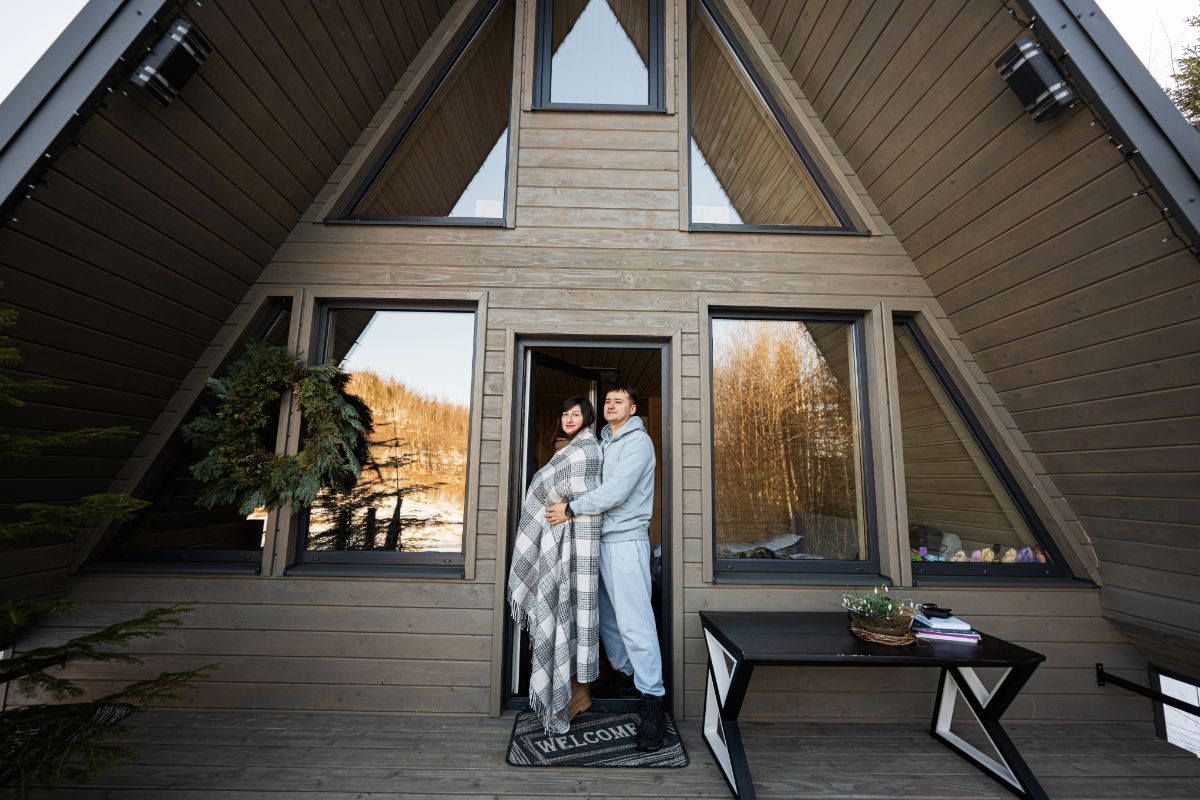
So, even though the Tiny House Movement has been slowly growing in popularity over the past few years, why is it suddenly so popular?
Well, one of the main reasons for this question simply comes down to the fact that many people are rejecting the idea of needing to have a big home and plenty of material possessions.
Instead of desiring these things, there has been a huge spike in the amount of people that are more interested in returning to a more simple way of living.
There are many people who own tiny homes that believe that their overall happiness levels and quality of life have both vastly improved since making the switch to a tiny home.
Instead of having to deal with all of the responsibilities that come with owning a large home (such as having to do lots of cleaning or being responsible for paying expensive bills each month) those that have made the decision to switch to a tiny home do not have to deal with these types of issues anymore.
Thanks to this, it means that people who live in tiny homes often have a lot more free time throughout the busy week to be able to spend time doing the things that they really want to do, such as leisure activities, working out, running errands and so much more.
As well as this, those who live in smaller houses also don’t need to worry about having to go to the trouble of spending lots of hours cleaning or maintaining the overall upkeep of their homes, as they have a much smaller living space to work with that makes maintenance and cleaning a lot less stressful.
In other words, one of the main reasons that so many people are suddenly turning to living in tiny houses is so they will then be given the opportunity to enjoy more time throughout the week doing the things that they really want to do, such as spending time with friends, trying out a new workout or even unwinding with a hobby that they love.
Plus, by making the choice to live in a much smaller living space, it means that they will have the opportunity to make more use of their disposable income each month, as it is highly likely that their bills will be more affordable due to the decrease in appliances and other items, as well as a smaller overall living space.
Along with this, there are also plenty of sustainable reasons why the Tiny House movement offers such legitimacy.
Through the use of tiny, micro-sized homes instead of traditional homes that are typically much larger, there is an encouragement of the efficient use of property and land.
Due to this, tiny homes can accommodate more people that are seeking a home, while also making use of a smaller portion of land.
This means that, when done correctly, tiny homes can accommodate more people that are seeking a home, while also ensuring that there is a more efficient use of land.
But, how did the Tiny House Movement come to be what it is today? Plus, why is it so popular to this very day? In the next section, we’re going to be providing you with a timeline.
Tiny House Movement Historic Timeline
Now that we have provided you with an overview of what the Tiny House Movement is, as well as explored a little more about the impact this movement has – we are now going to be taking a trip down memory lane and uncovering the history behind the Tiny House Movement.
Below, you will find a timeline that covers all of the noteworthy moments over the past few hundred years that have helped to both define the Tiny House Movement, as well as make it what it is today.
So, without further ado, whenever you’re ready, just keep on reading to discover more about the rich history of the Tiny House Movement:
1845 – Henry David Thoreau And The First Tiny House
Despite the fact that many people think that the Tiny House Movement started around the year 2000, the existence of tiny homes existed long before that.
In fact, as you will have been able to see from the title of this first section, there is evidence of tiny homes dating back to the 1840s! To explain this, it all comes down to the simplicity of owning a small home.
By having a tiny home, you’re given the opportunity to live a simpler and more minimalist lifestyle with only the items and space that is absolutely necessary to you. This is where Henry David Thoreau comes into the picture.
If you are already familiar with American history, we’re sure that you might have already heard of Henry David Thoreau, as he’s quite a notable figure. But, if you are in need of a memory refresh, Henry David Thoreau is an author who wrote the book On Walden Pond.
In this novel, Henry David Thoreau wrote about the meaning of a simple life, and it has gone on to become one of the most famous books in the Tiny House Movement community.
The book was written by Thoreau over the course of two years while Thoreau stayed, and the house was just 150-square feet in size, and was situated right next to a pond in Concord, Massachusetts.
Here’s one of the greatest quotes from Henry David Thoreau’s iconic book:
“A man is rich in proportion to the number of things which he can afford to let alone.”
In this sentence, which has gone on to become one of the most famous from the novel, Thoreau explains the main foundation upon which his novel has been built upon – the simple life.
According to this statement, wealth doesn’t come from the amount of materialistic objects that you own, but rather how content your heart can be with only the necessities.
While living at this tiny home next to the small pond in Concord, Massachusetts, it should come as no surprise to hear that Henry David Thoreau’s living space was also a reflection of this notion.
In line with the idea that a man’s wealth is determined by how little he can have, Thoreau’s living space was humble, quaint and only contained items that he absolutely needed.
The little house that Henry David Thoreau lived in while writing this book no longer exists, but the good news is that a replica of the cabin has been made in order to provide people with the chance to see exactly what Henry David Thoreau’s living conditions were like during his time spent at the tiny house.
Inside the replica, all you will find is a bed, a desk, a chair as well as a fireplace. However, it is important to keep in mind that the book that Thoreau wrote, despite being famous now, went relatively overlooked at the time of its initial release.
It wasn’t until nearly 100 years later (yes, you read that right) that there was a major societal shift that brought tiny homes into the spotlight of many people looking to become homeowners. This brings us to our next section! Scroll on.
1998 – The Not So Big House By Sarah Susanka
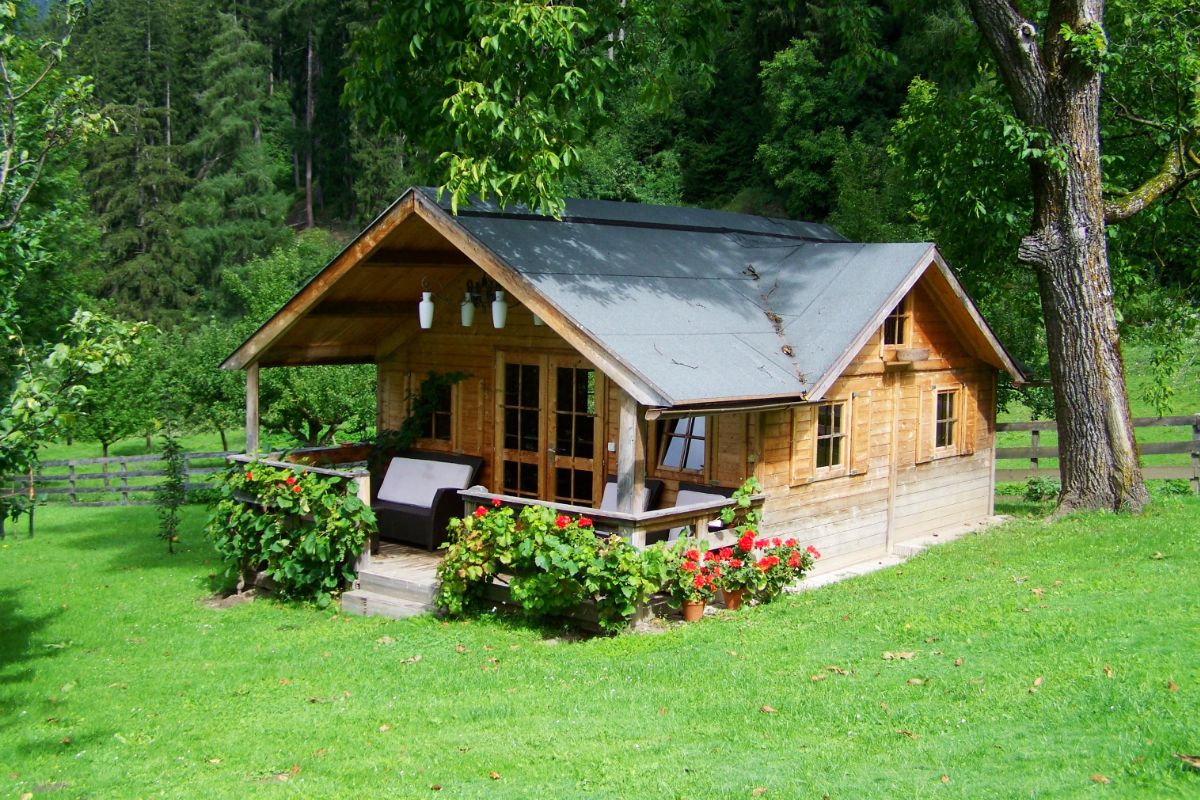
As we have mentioned above, even though the written works of Thoreau have gone on to become noteworthy within the Tiny House Community, it wasn’t until nearly 100 years later that his works started to become popular.
During the 70s and 80s, there were a handful of books that were released about tiny homes, but these particular books were mainly focused on highlighting small homes and structures from around the world, rather than actually focusing on the Tiny House Movement. So, when did the Tiny House Movement start to pick up traction?
Well, the Tiny House Movement started to gain popularity and momentum (on a cultural level) during the 1990’s when the English Architect Sarah Susanka wrote “The Not So Big House: A Blueprint for the Way We Live”.
This book was published in 1998, and was intended for prospective homeowners looking to purchase their first home to consider the idea of quality over quantity, rather than the other way around.
By focusing on the quality of their home, it meant that they would be able to maximize small spaces (through interior design and more) instead of simply opting for a larger home.
According to the United States Census Bureau, the average square footage of a home in the year 1998 (which is the year that Sarah Susanaka released her book) was over 2,150 square feet, which was the first time that this figure had been surpassed since 1973.
At the time of its release and even to this very day, The Not So Big House: A Blueprint for the Way We Live invited readers to engage in the conversion surrounding big homes vs. smaller homes, as well as the idea that a larger space doesn’t always equate to a better one.
2000 – Jay Shafer Creates The Tiny House Movement
Many people often believe that the Tiny House Movement only “existed” from 2000 onwards, and the main reason for this comes down to Jay Shafer.
Jay Shafer is credited with pushing forward the idea of the Tiny House Movement, so it should come as no surprise to hear that he is considered by many to be the founding father of the Tiny House Movement as a whole.
Besides helping to propel the movement forward by speaking about it on his front-page feature with the Des Moines Register, he is also credited with bringing this moment into mainstream culture. Wondering how he did this?
Well, Shafer created a feature that was titled “Home Sweet Hut”, and it consisted of a feature that allows readers to gain an insight into the unusual and intriguing lifestyle of those that choose to live in tiny homes. In other words, the lifestyle of the Tiny House Movement.
According to many people who read the feature at the time, the general consensus was that it appeared as though Shafer was living in a “tiny garden shed”, when in reality, it was a tiny house that would soon go on to become one of the most widely recognized tiny homes after the small house by the pond.
2002 – The Small House Society
Fast forward a few years to 2002, and Shafer was on the road to creating what we all know today to be the Tiny House Movement. Instead of it going by this name, though, it initially was called The Small House Society.
During the first meeting that took place in 2002, The Small House Society decided that they were going to form a small, grassroots organization that would soon pave the way for the Tiny House Movement.
The four “founding fathers” of the Small House Society were called Johnson, Shafer, Nigel Valdez as well as Shay Salomon. Almost immediately, after creating the Small House Society, the small group soon went on to grow in size of 12.
According to Johnson, one of the founding members of this society, the Small House Society began with the following:
“I think it began with 12 members(..) I guess you could say it was part legit interest and it was part satire and fun and humor. Because who is going to live in a garden shed? That’s not going to happen.”
Whether for satire or not, the Small House Society proved itself to be an organization that was here to stay.
Just one year after its creation, the Small House Society grew in numbers, while one of the founding members, Johnson, asked Shafer to build him a tiny home of his own. Johnson then went on to move into this tiny home in August of 2003.
2006 To 2007 – In The Spotlight With Oprah

Moving on to the mid, early 2000s, and the Small House Society was beginning to garner widespread attention all over the USA. In May of 2006, Johnson was interviewed by NPR for an “All Things Considered” segment that was very popular for listeners at the time.
Within mere days of this segment being published by NPR for the public to listen to, Johnson stated that the Small House Movement was receiving national attention on a bigger scale than he, or any of the other founding members of the Small House Society, had ever seen.
So much so, in fact, that after just a few days of the interview being aired, Johnson was approached by a publisher offering him a book deal.
Johnson accepted this deal, and in 2008, he released a book of his own titled: Put Your Life on a Diet: Lessons Learned From Living in Less Than 140 Square Feet”.
Rewind back to 2006 right after the NPR interview, and the Small House Society was slowly starting to become known around the country. But, it wasn’t until around 9 months later that the Tiny House Movement (as we have come to know it today) got its big break!
In February of 2007, Oprah made the decision to highlight Schafer’s little 96 foot tiny home to her viewers for her show, The Oprah Winfrey Show, and this is precisely when the movement sky-rocketed into mainstream culture.
In the narration, which is still available online to view, Oprah narrates “Jay Schafr’s itty-bitty home is an astounding 96-square feet(…) Jay’s commute from home to the office is just inches away”. This is what Jay had to say to Oprah:
“Aside from not needing anything more than this, I really like the idea of putting what I do have into quality over quantity. Living small is really a luxury, in the sense that I have a lot of time now that I didn’t have before. I can focus now on the other things I want to do in my life, rather than just paying the mortgage and taking care of the house.”
Fun Fact: To this day, the Small House Society is still well-known all over the world, and there are regular meetings held for those that are members. However, the Small House Society is not as popular as The TIny House Movement.
2007 To 2008 – The Crisis Of Mortgages
The Tiny House Movement was certainly having its moment as an intriguing and almost humorous topic of conversation for regular homeowners throughout the country and wider world.
However, as fate would have it, tiny homes were propelled into a serious movement during the mess of the mortgage crisis that rocked the United States during the years of 2007, 2008, and many years after that.
During this time, there were hundreds of thousands of Americans that were having to foreclose on their homes and sell up their homes.
With the impending doom of a recession just over the horizon, many Americans started to view the ownership of a house a little differently than ever before.
The dream of having a large home, which once seemed to be a very attainable dream, seemed further away than ever before.
Due to this, Millennials started to believe that opting for a smaller home was going to be a much better option, especially due to the cost of living issue.
While the thought of owning a tiny home was once an idea that was joked about or poked fun at, during the mortgage crisis tiny homes suddenly became an attractive living option for many prospective homeowners across the states.
Just think about it: the costs to maintain a tiny home were going to be far more affordable than a larger home, as well as a lot easier to take care of.
2009 To The Present Day – The Tiny House Movement In Mainstream Culture
Due to the events prior to 2009, the Tiny House Movement started to gain some serious traction to people all over the USA, as well as the world as a whole.
Along with books being written about the Tiny House Movement, blogs were also starting to be launched that were all about the Tiny House Movement.
Along with the Tiny House Movement gaining traction on the internet, which provided more people than ever the chance to learn about the Tiny House Movement, there were also a variety of sub-associations being formed around the Tiny House Movement.
In the year to come following 2009, there were many towns all over the USA that began to invest in the creation of tiny homes all over the country.
One of the main trailblazer towns that did this was Spur, Texas, which officially declared itself as being a tiny house town back in 2014.
To this very day in the present, Spur is a town that welcomes members of the Tiny House Movement to settle in the welcoming community.
As you might have guessed from the name, Spur is exclusively filled with tiny homes, and welcomes homeowners from all over that want to live in a smaller home and/or are interested in an unconventional way of living.
On Spur’s website, representatives of the town write the following:
“The tiny house movement is one example of reducing costs and gaining freedom to operate according to your own plan, unfettered by onerous and unnecessary costs…We propose that tiny houses in small towns yield even more freedom and offer a unique opportunity to regain a sense of community and self-sufficiency.”
But, Spur is just one example of the way that the Tiny House Movement has gained such popularity over the past decade or so.
In recent years, tiny homes have extended past small towns in the USA, and have even begun to become popular in other areas of the world, as well!
One of the main reasons for this increased popularity comes down to the release of two immensely popular shows that were released during the 2010s. These were the Tiny House Nation and The Tiny House Hunters.
These two shows helped to push the momentum of the Tiny House Movement, and are one of the main reasons that this movement is as big as it is today. So, what were these two shows about?
Well, as you might have been able to guess already from the names, these two shows were based around taking normal, everyday people and taking them on a crash course through the world of the Tiny Home Movement, as well as provide them with an insight into what the lifestyle of living in a tiny home consists of.
Besides being entertaining and educational, viewers from all over the world were given the opportunity to gain an insight into what it was really like to live in a tiny home, as well as learn from the perspectives of those who choose to live in tiny houses all over the world.
Ultimately, despite being very humorous to watch in places, these two shows did nothing except further legitimize the Tiny House Movement, as well as propel it forward onto a national scale.
Has The Tiny House Movement Contributed To Sustainable Living?
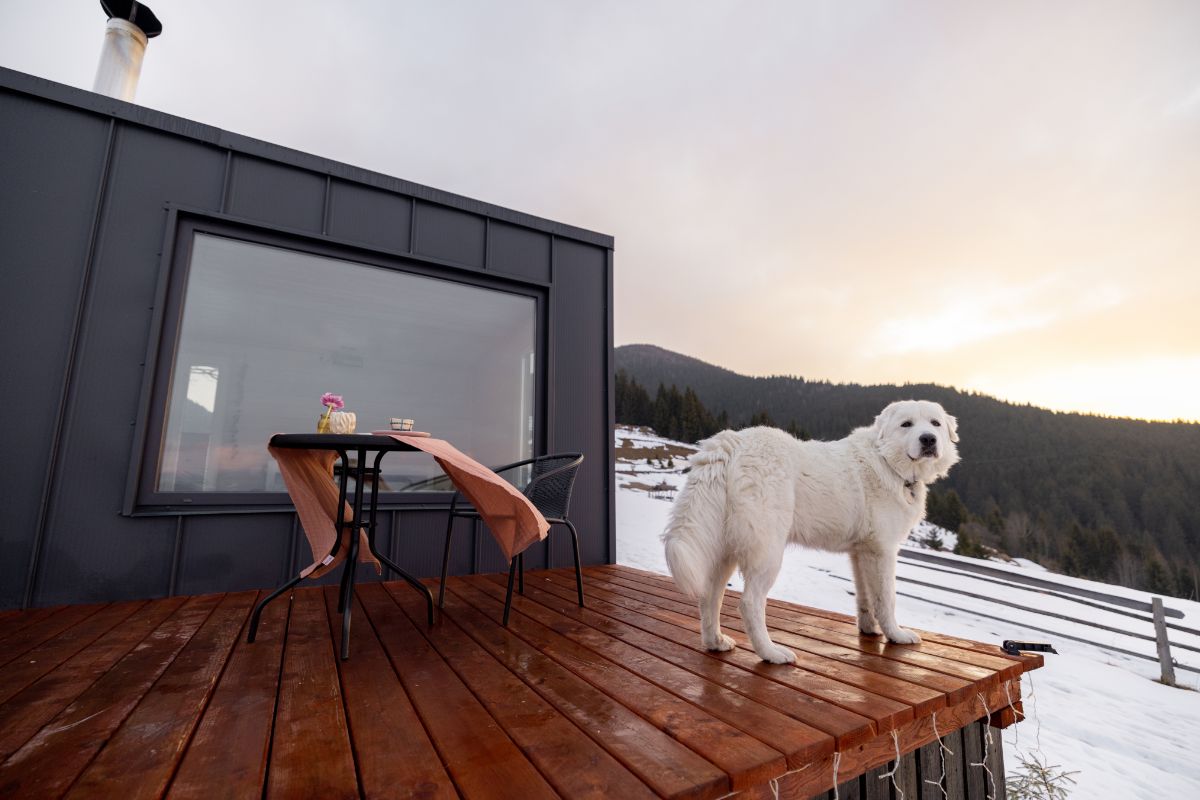
As you will have seen from the timeline above, it’s very clear to see that, despite having been around in some way or another since the 1800s, the Tiny House Movement began to take on the most momentum during the last decade or so.
The main reason for this comes down to the idea of “tiny living” which relates back to the notion of quality over quantity.
Along with that, the Tiny House Movement also supports the idea that there should be a greater focus on using items that are sustainable as opposed to bad for the environment, which is just one of the main reasons as to why the Tiny House Movement is also seen as being a movement that advocates for sustainable living.
Final Thoughts
While it’s safe to say that opting to live in a tiny home might not be the best option for everyone, the celebration of quality over quantity is an aspect of the Tiny Home Movement that both supporters and non-supporters of the Tiny House Movement praise the movement for.
Now that you have taken the time to read through our timeline, we hope that you’ve been able to learn about the rich history of the Tiny House Movement. Bye for now!
Frequently Asked Questions
To cut a long story short, the main philosophy of the Tiny House Movement is making the decision to own less materialistic items so that what you own “doesn’t own you.”
Essentially, the Tiny House Movement’s main philosophy is that experiences in life and the communities that we build are far more important than the things that we own – including our homes!
If you have already taken the time to read through our guide to the history of the Tiny House Movement above, then we’re sure that you will have seen how there are many different reasons why a person might make the decision to live in a tiny house.
Among other things, one of the main reasons that many people find themselves making the decision to join the Tiny House Movement community is because they want to ease the stress and pressure of financial responsibilities.
Given how small tiny houses are, as well as the encouragement of a decrease in physical possessions, there are many people who find themselves experiencing financial freedom after making the decision to move into a tiny house.
This is because the smaller living space offers the benefit of being able to enjoy more affordable bill prices each month, as well as the ability to lower their chances of having to deal with stressful financial situations like debt.
Not just that, but making the decision to move into a tiny house can also help to result in a smaller footprint on the environment due to reduced bill costs.
Plus, if you have made the decision to move into a tiny house (or it is something that you are considering) you will also have a much higher chance of saving money when shopping for items.
Given the smaller living space that you will be dealing with, it means that there will be a much lower chance of you spending money on unnecessary items that you don’t actually need.
Instead, you will be encouraged to only spend money on appliances and homeware that you truly need. Ultimately, moving into a tiny house can lead to lower monthly outgoing bills, which can in turn help to reduce the overall carbon footprint of the home.
Yes! The Tiny House movement is still going, as it is both a social and architectural movement that specifically advocates for downsizing living spices, as well as simplifying the amount of materialistic items that you need to have.
It focuses on the idea of quality over quantity, and is a movement that dates back to the 1800s.
One of the biggest questions that many people have surrounding the legitimacy of the Tiny House Movement, is whether or not tiny homes can be used as a real solution to assisting in housing shortages that many countries face all over the world.
Well, in recent years, one of the most intriguing aspects of this movement is the way that tiny homes have moved from being simply an unconventional lifestyle choice of the minority to a full-blown solution for many cities all over the world for helping to deal with housing crises.
- What Is The History Of The Tiny House? - June 9, 2023
- Who Invented The Container Home? - June 9, 2023
- 6 Fabulous Tiny Homes For Sale In Massachusetts To See How You Could Be Living - May 8, 2023

